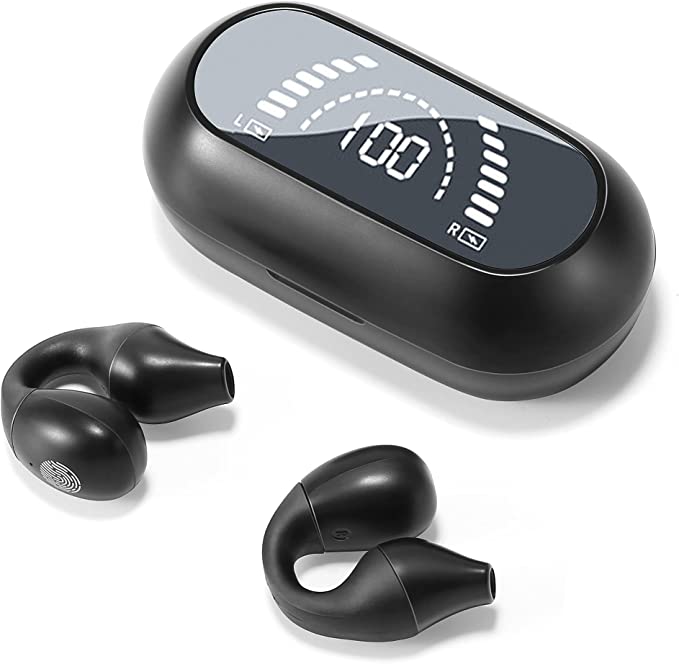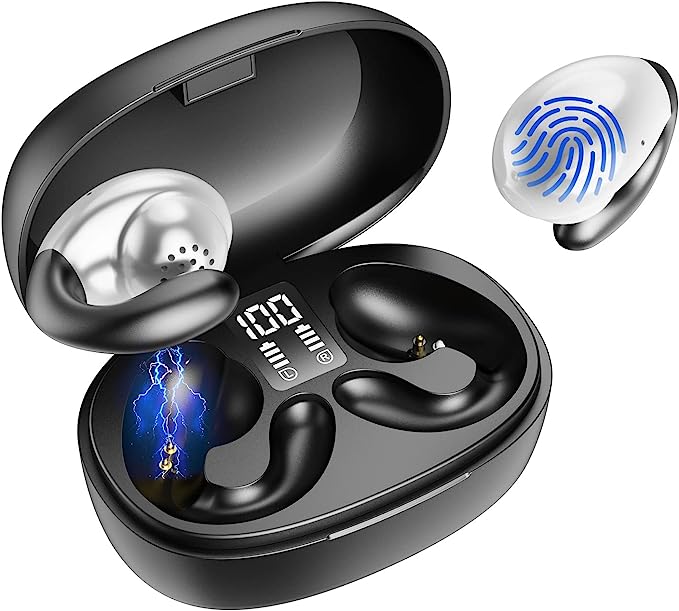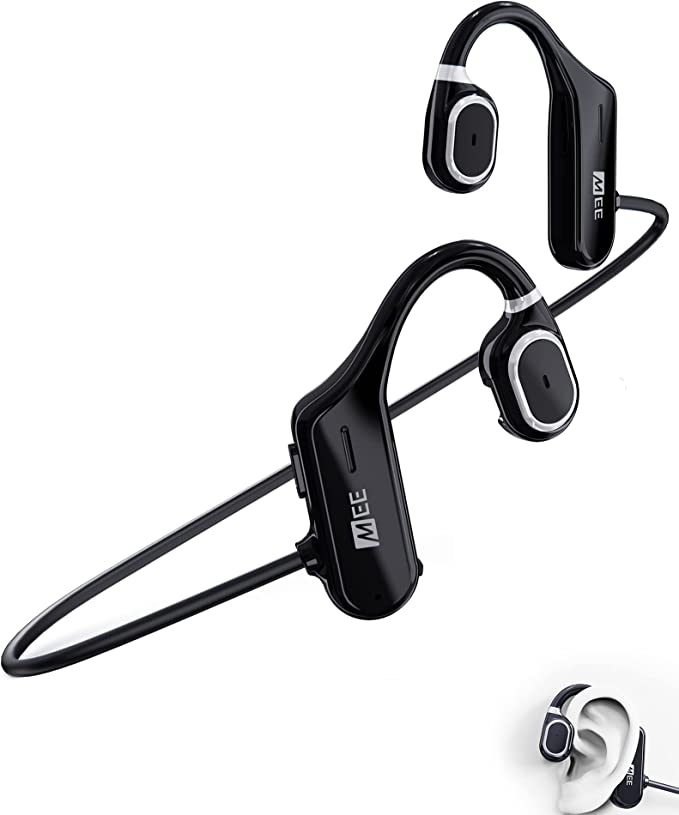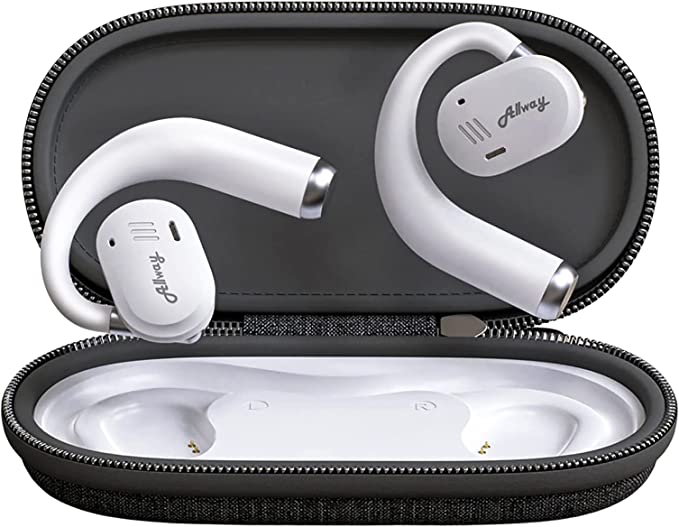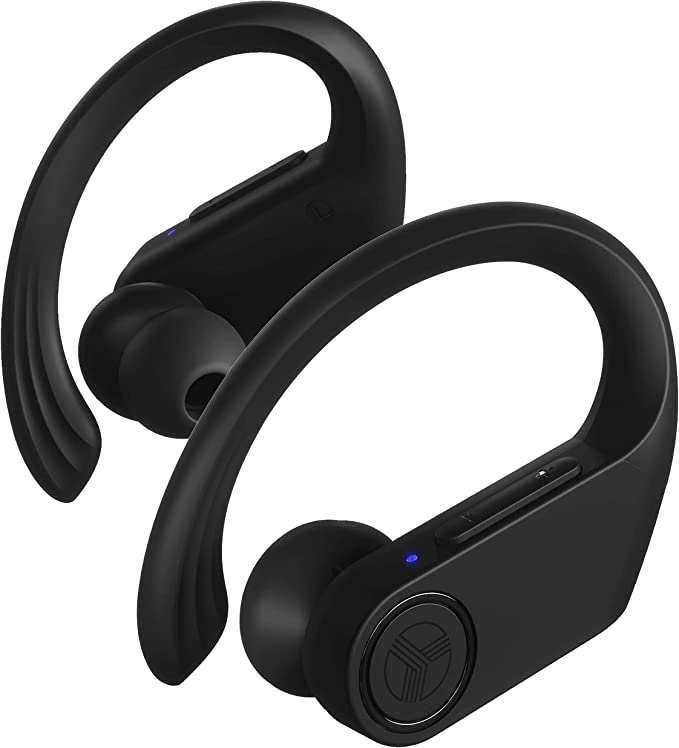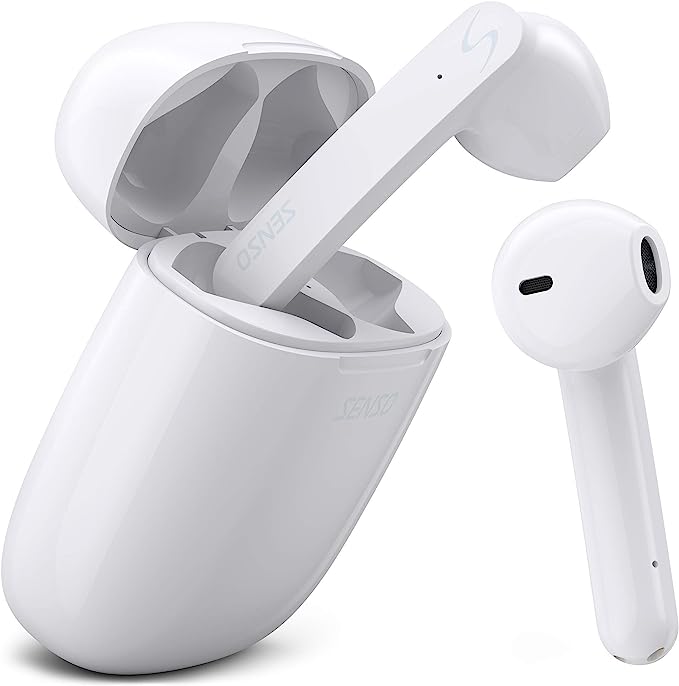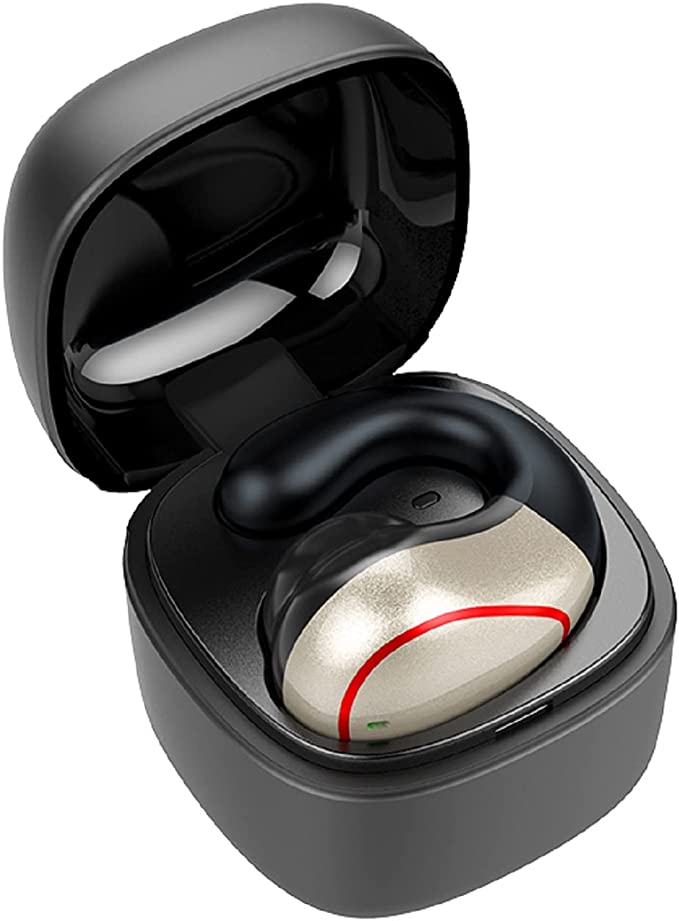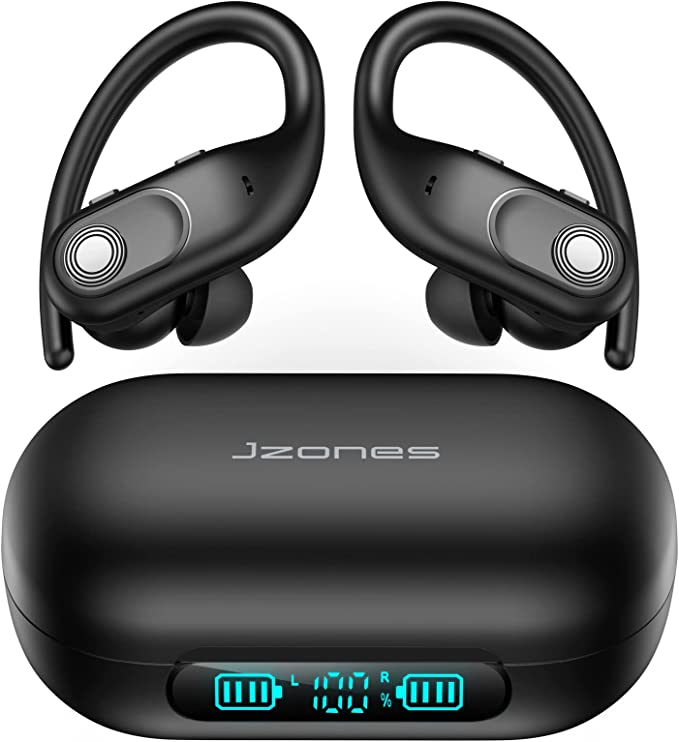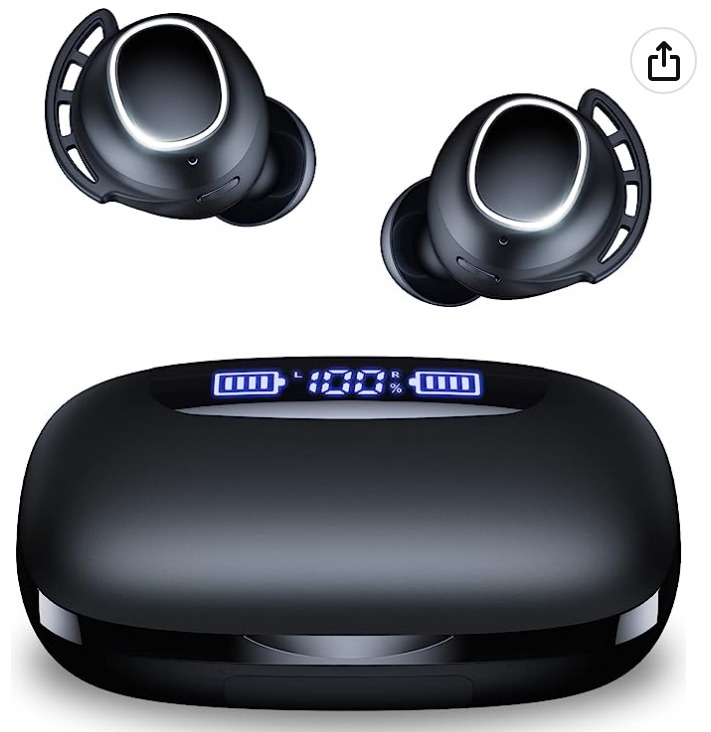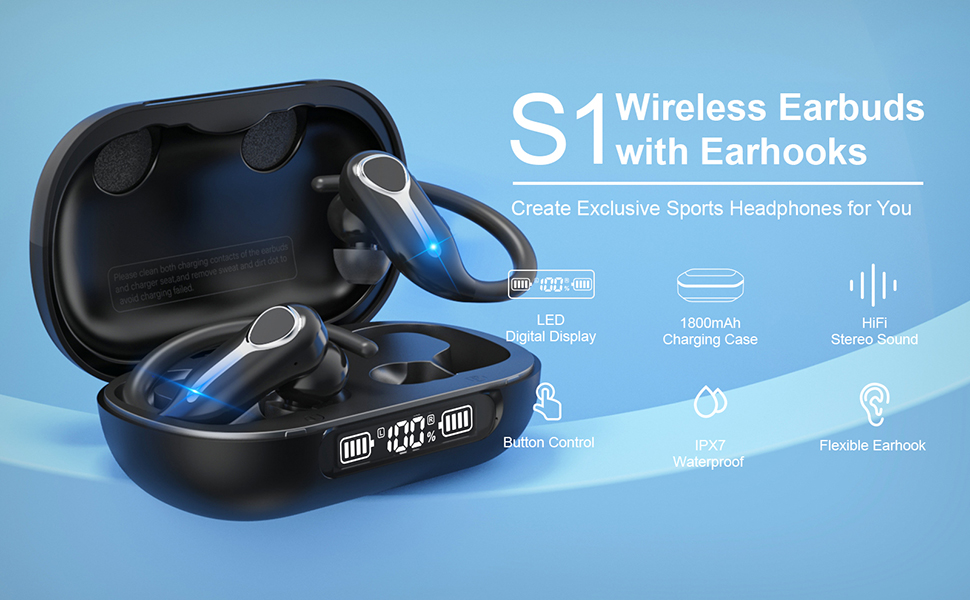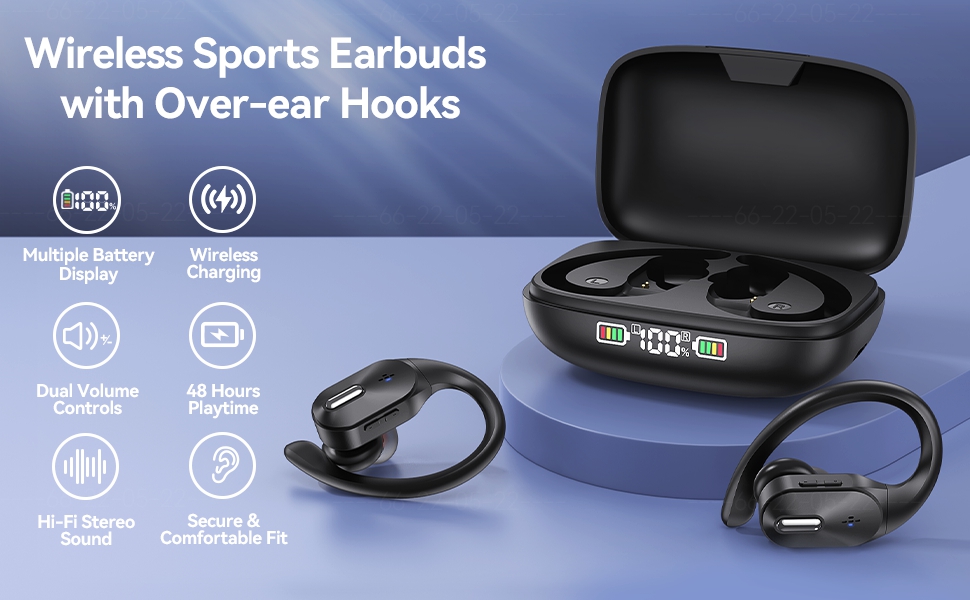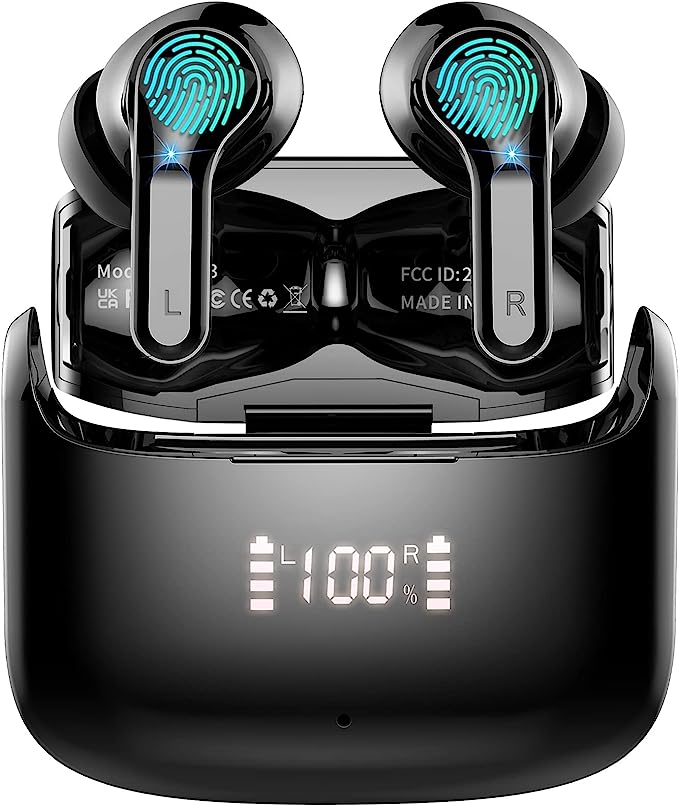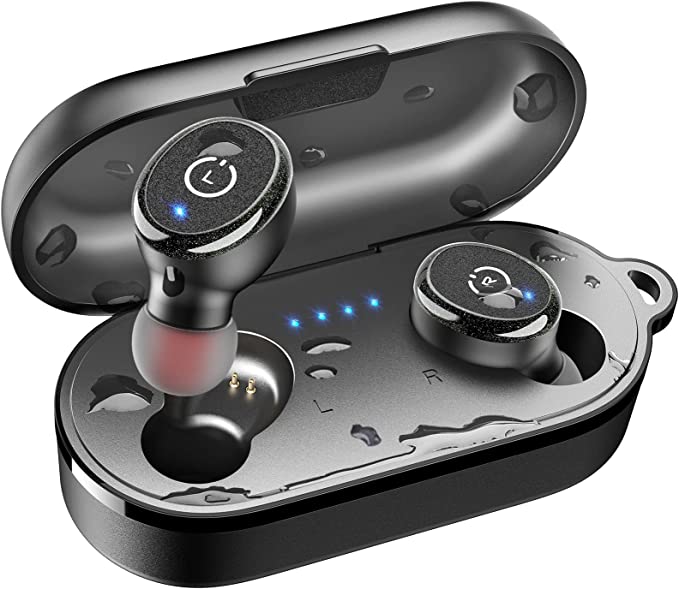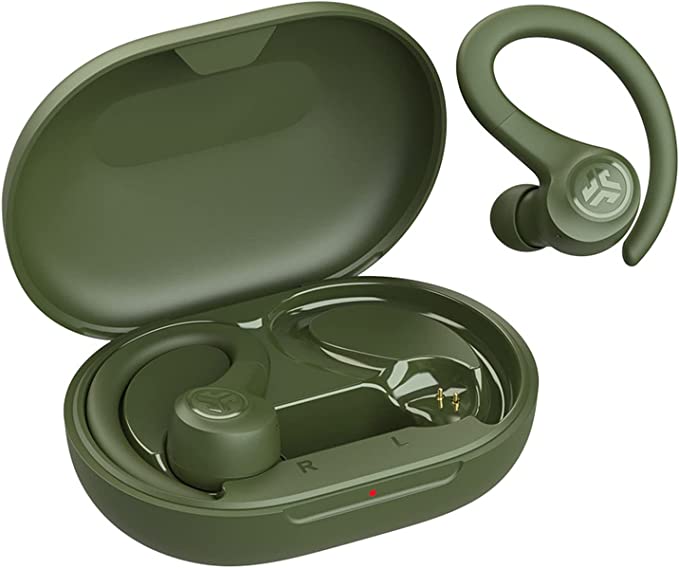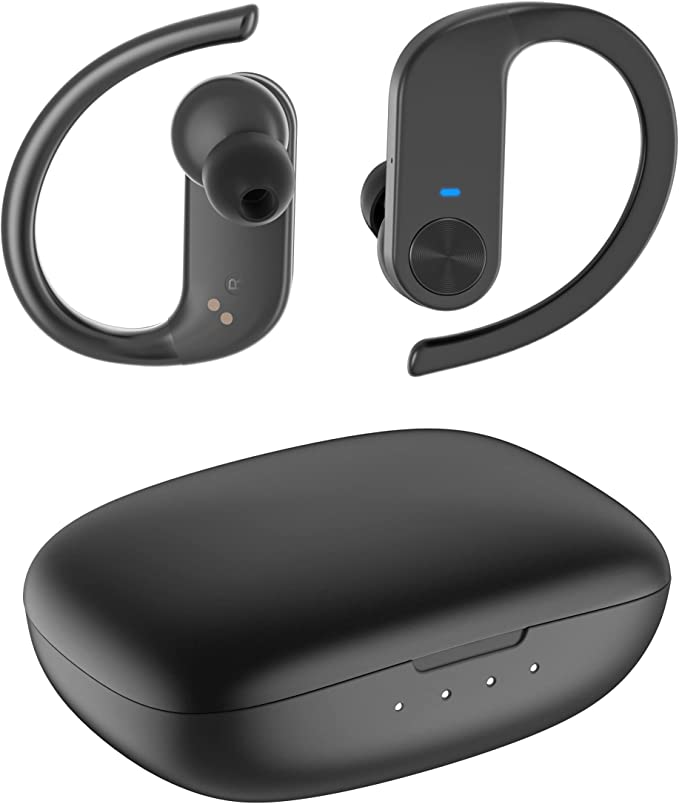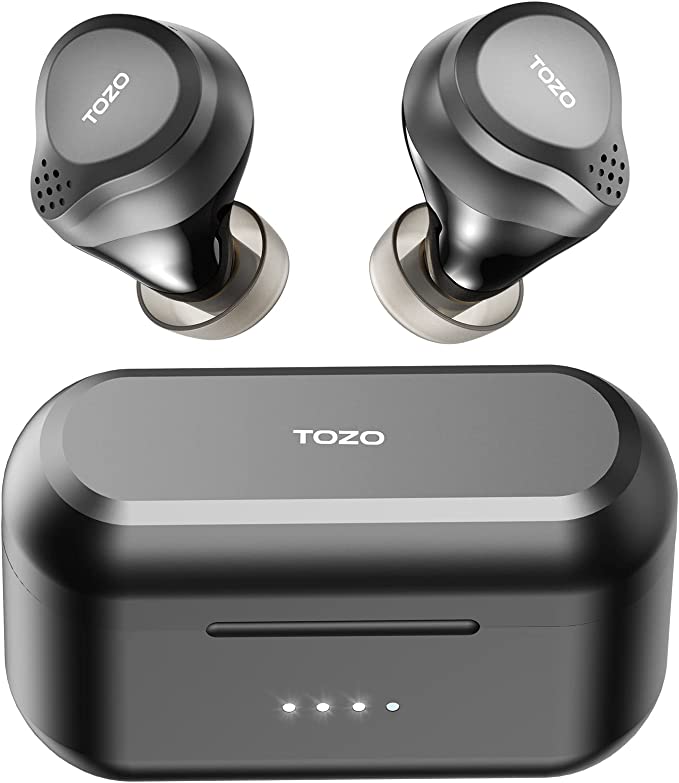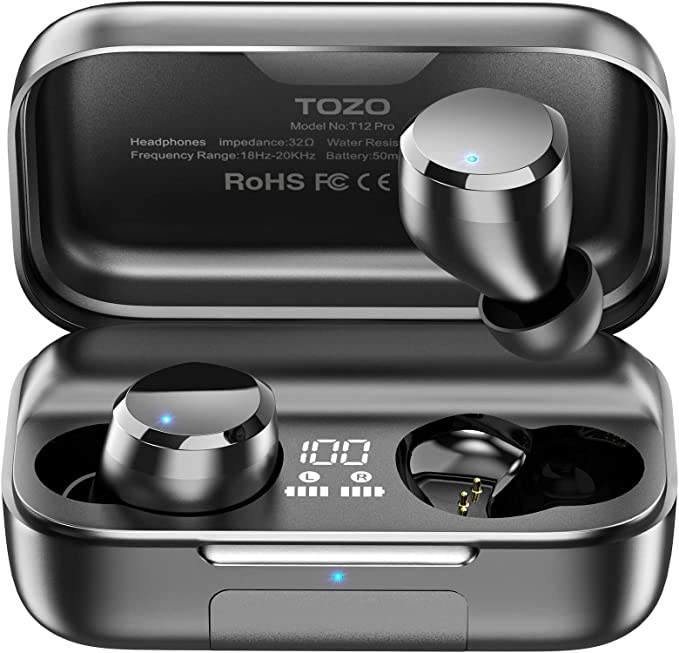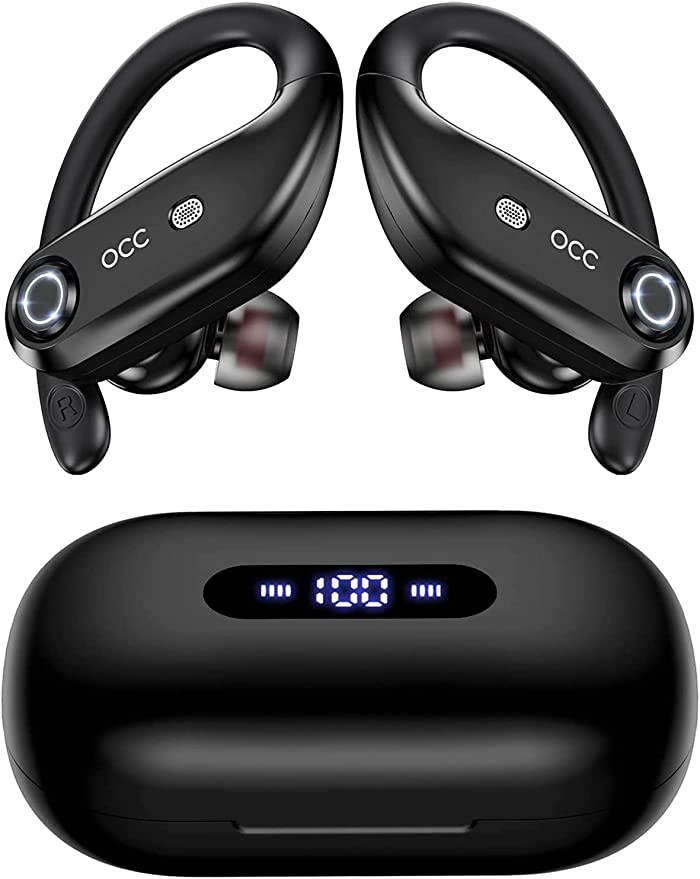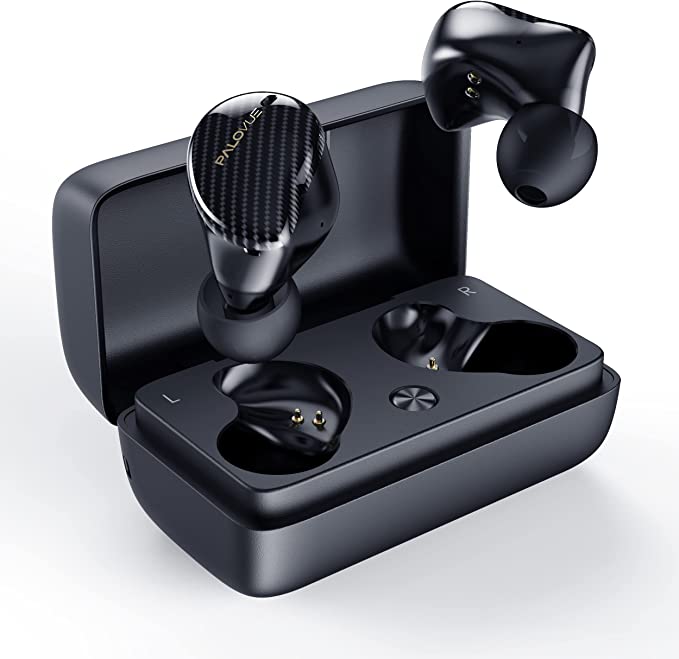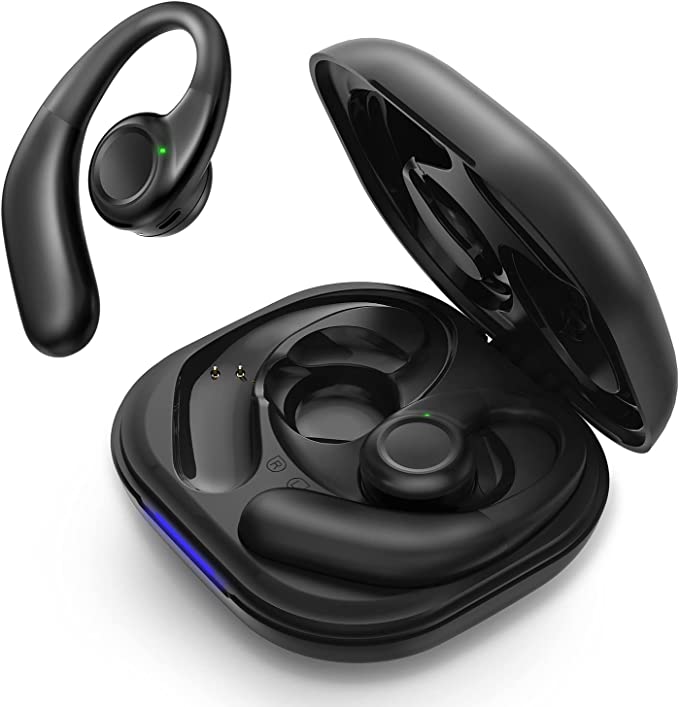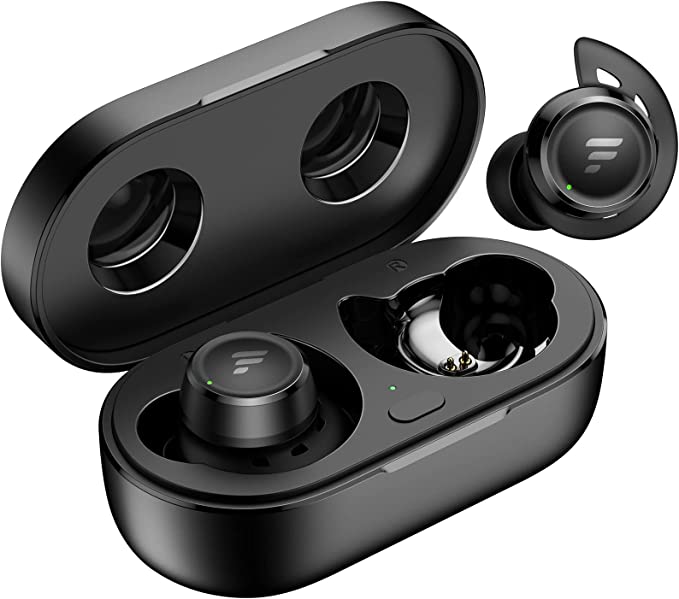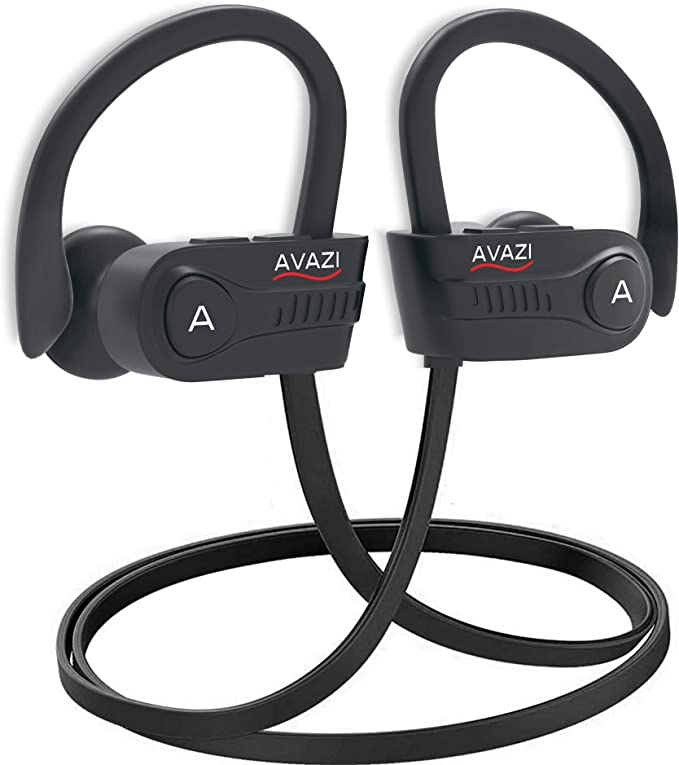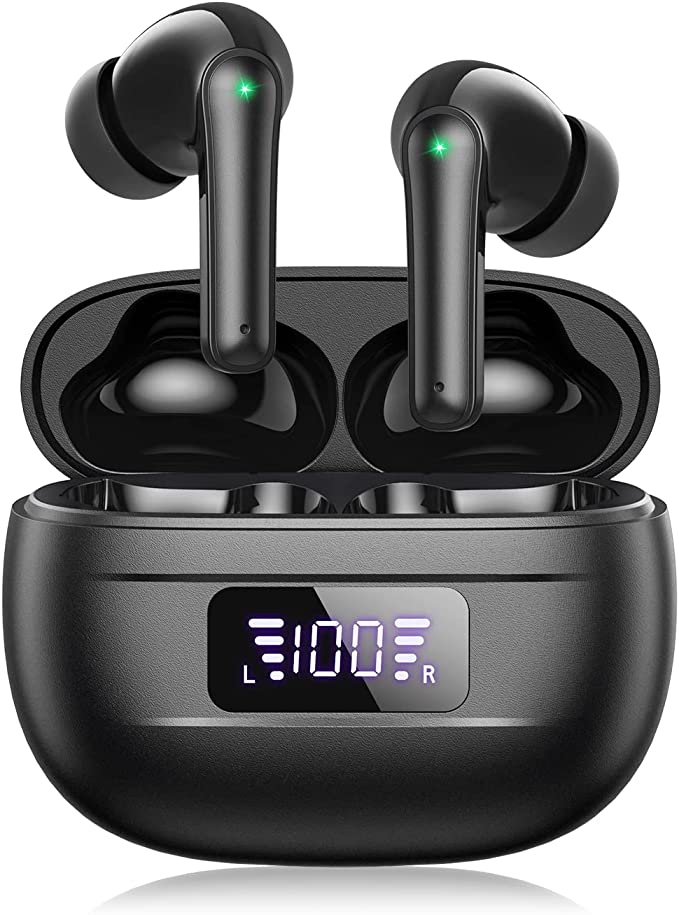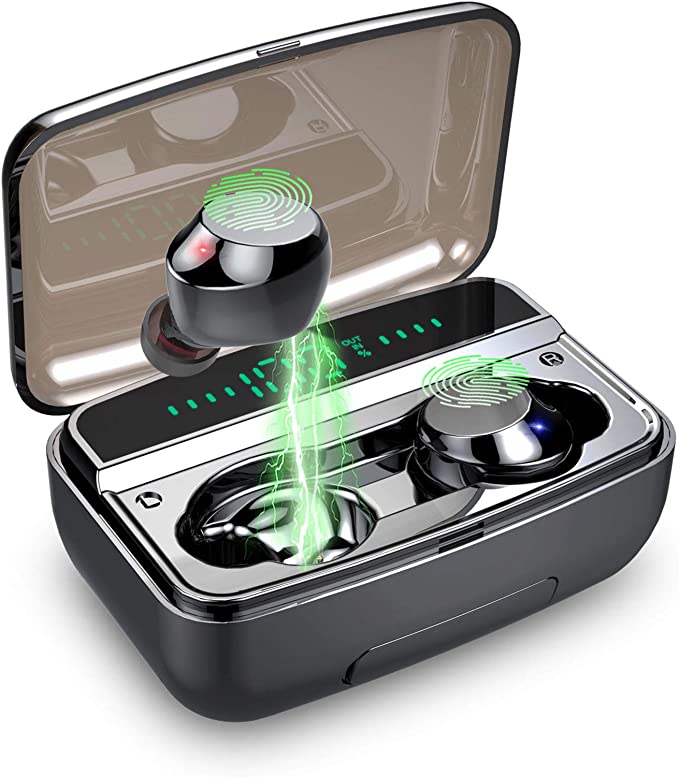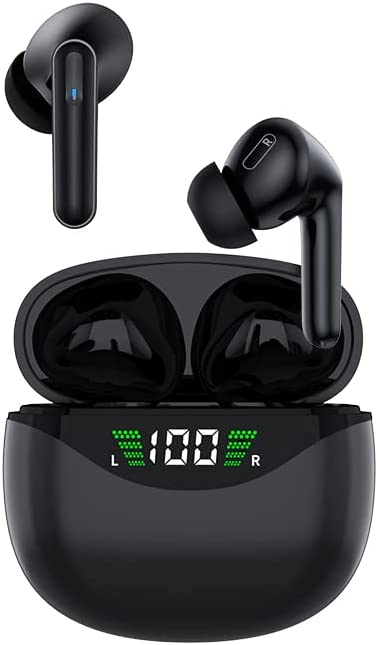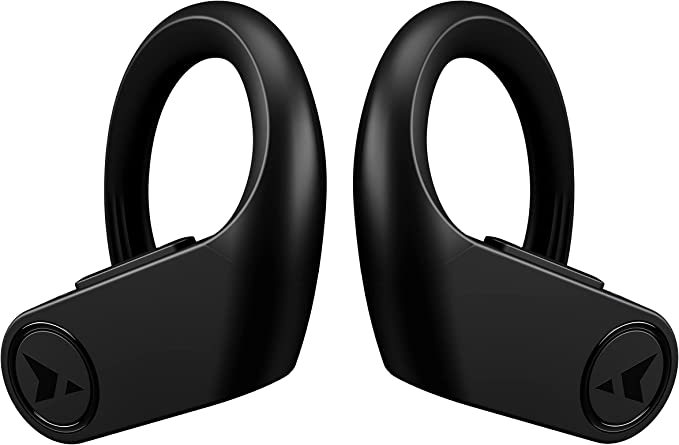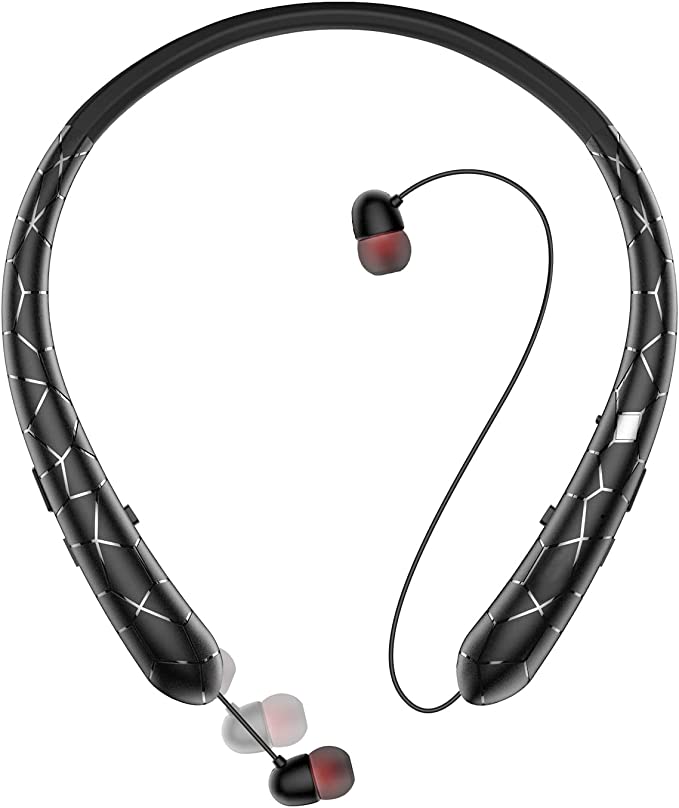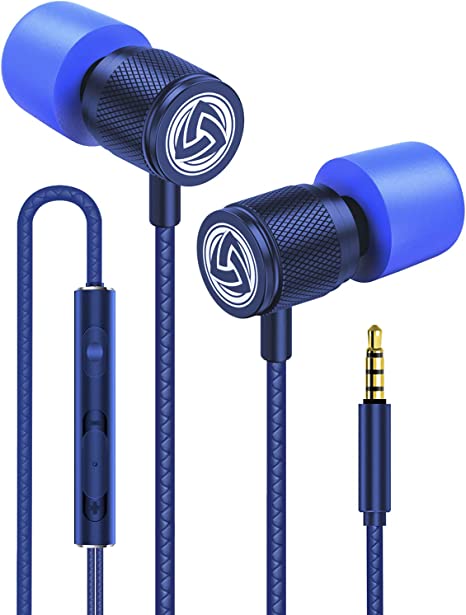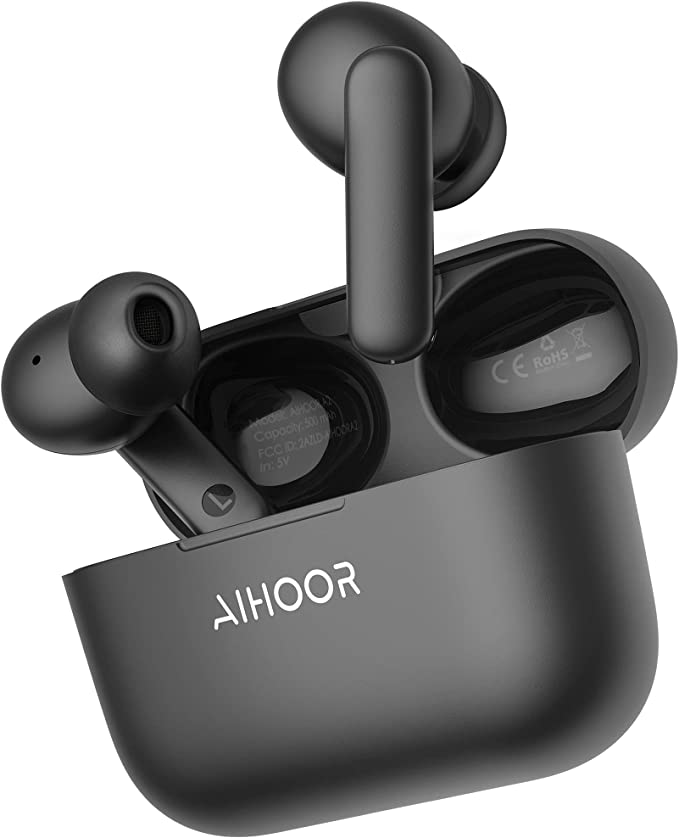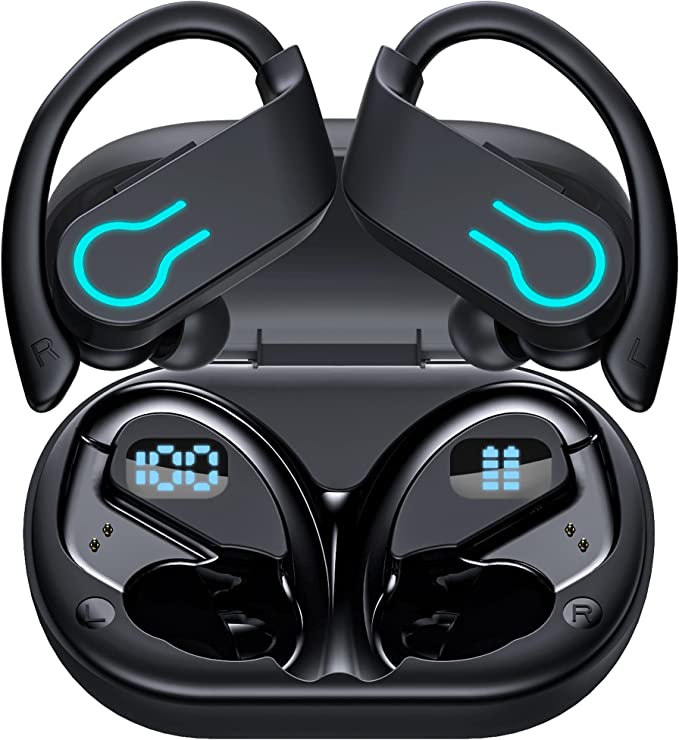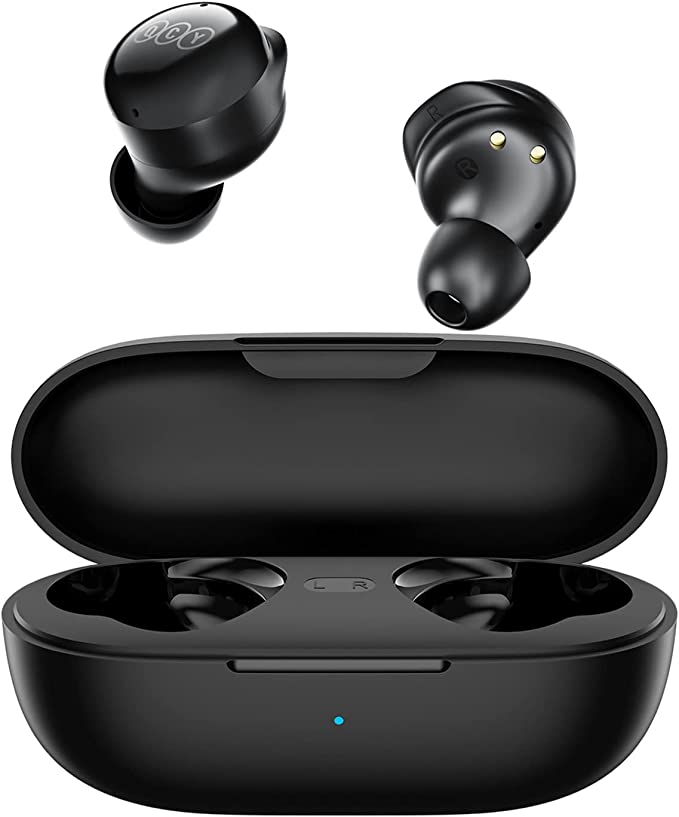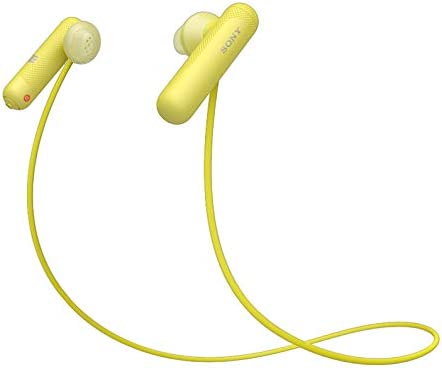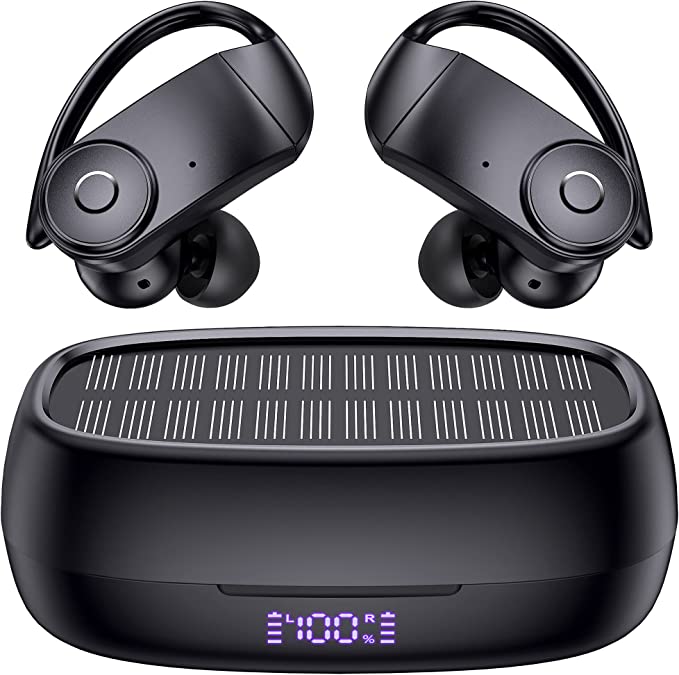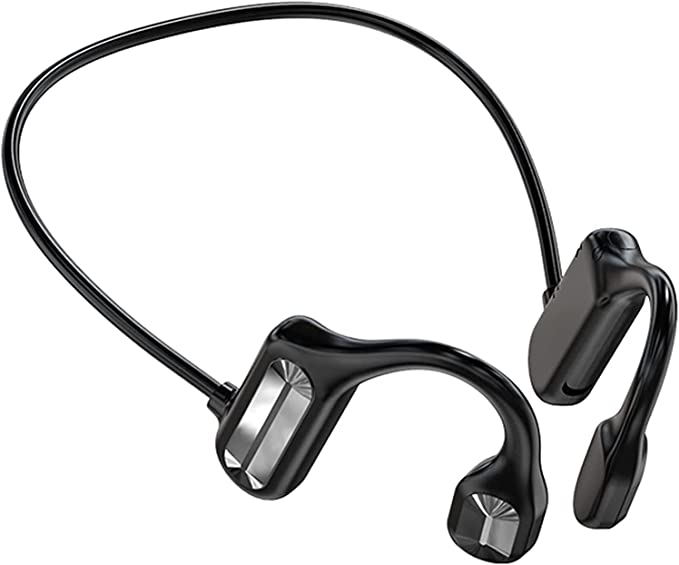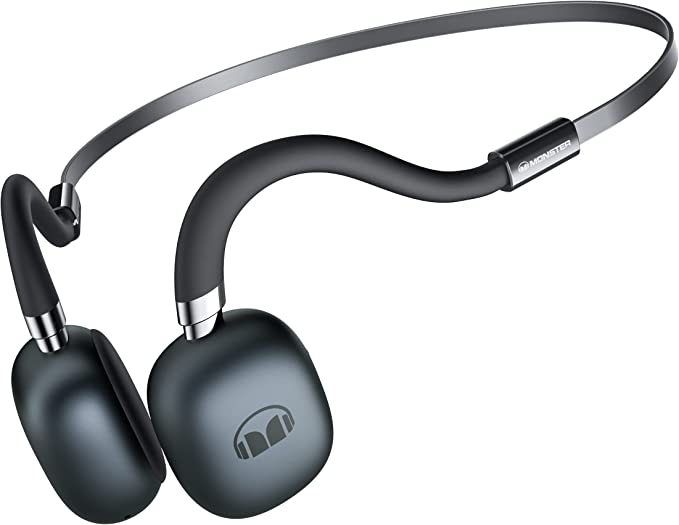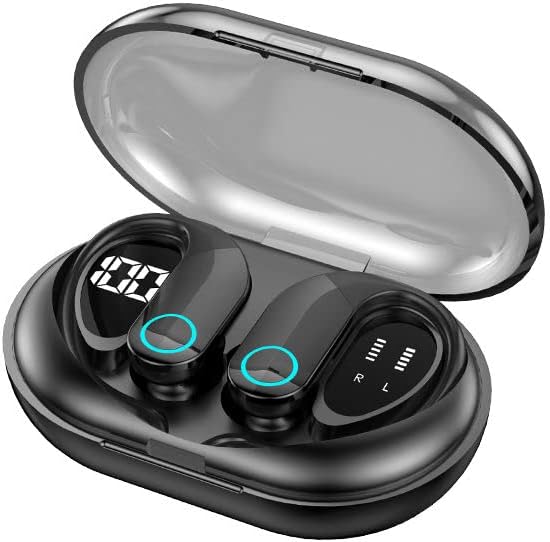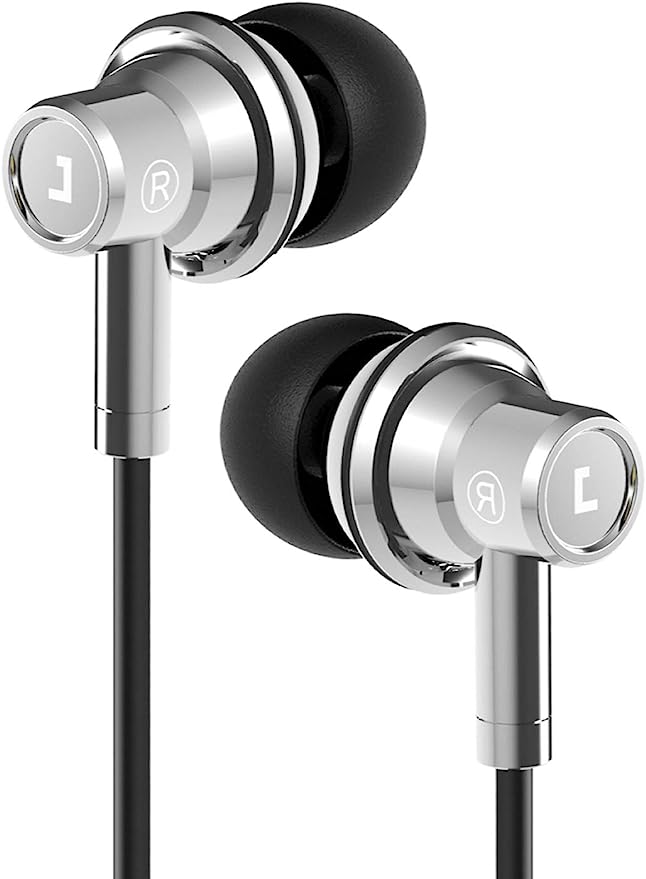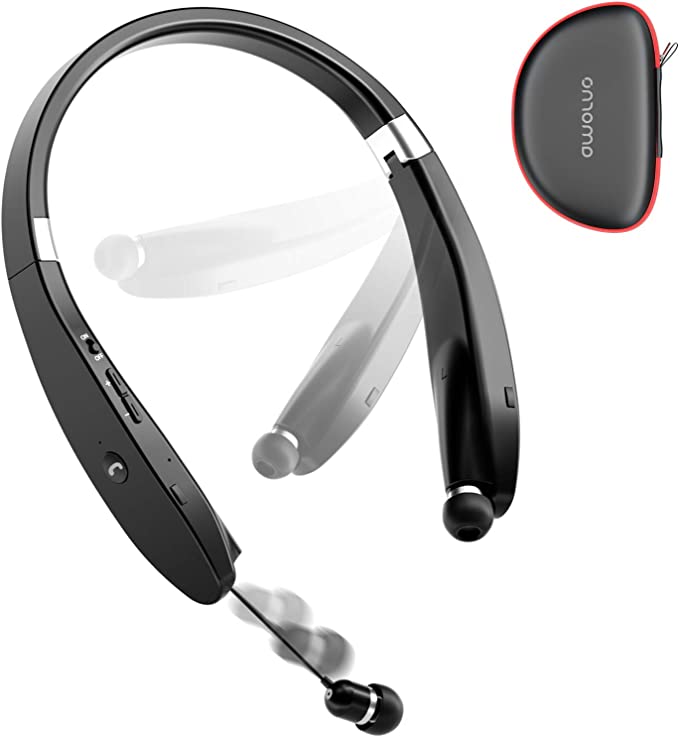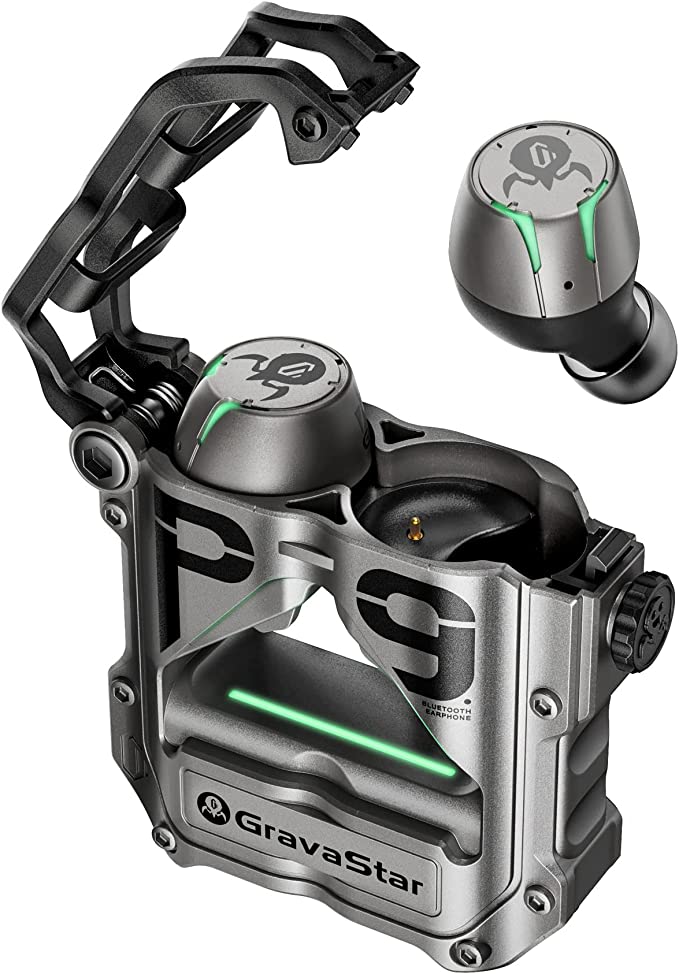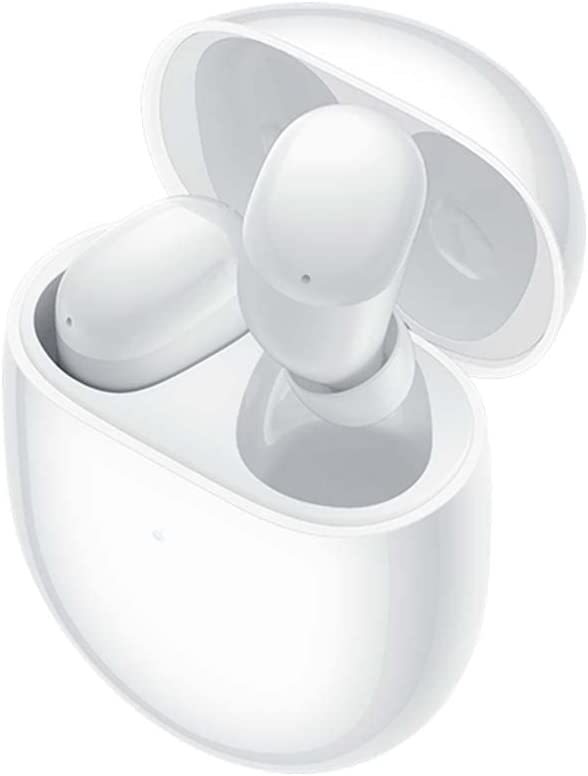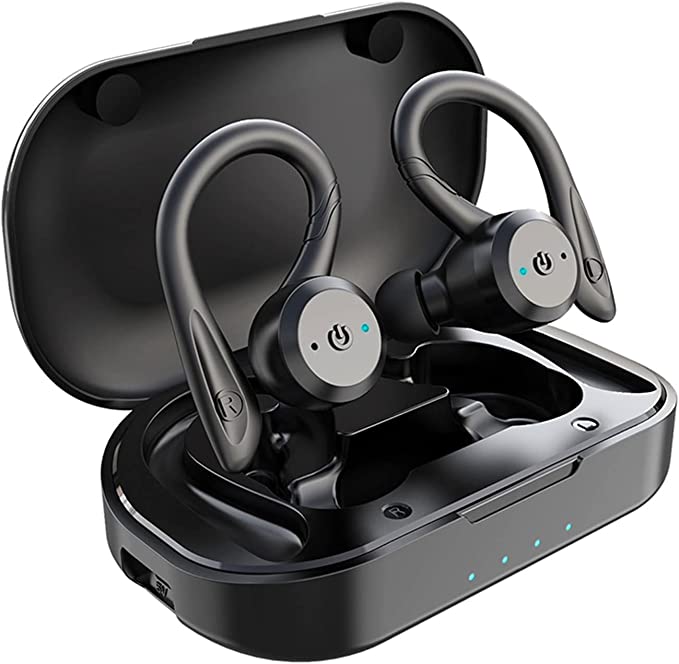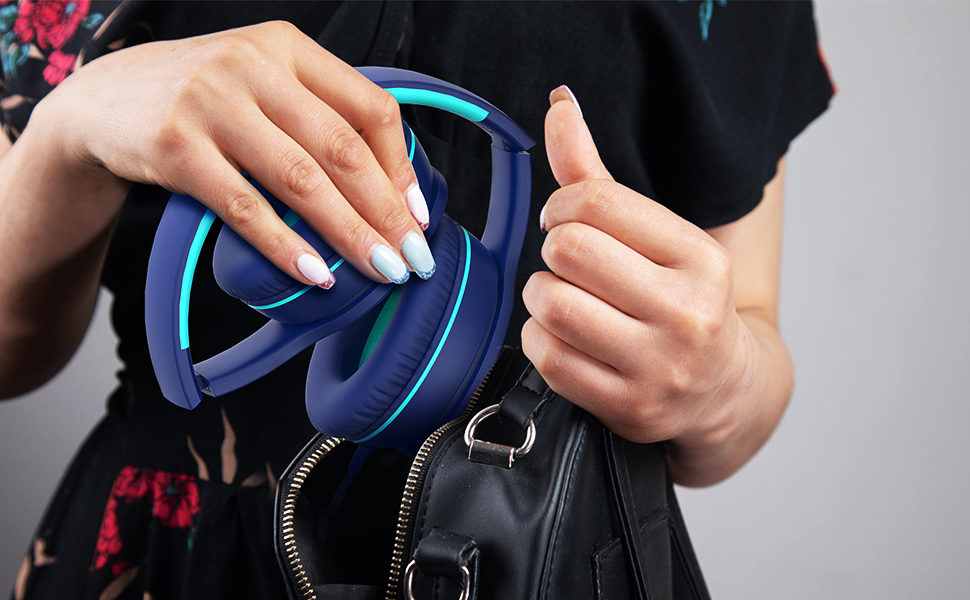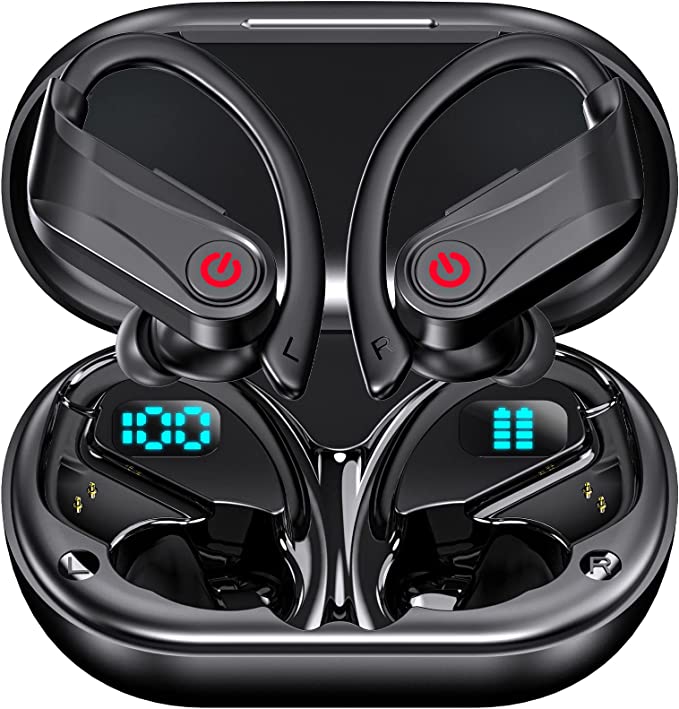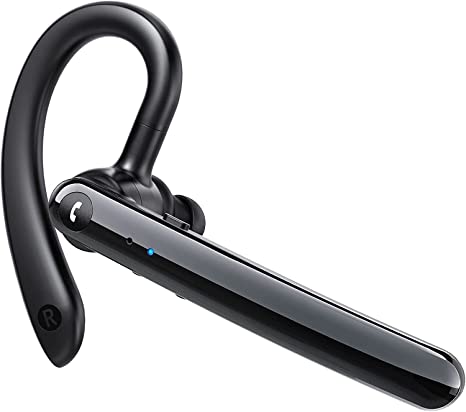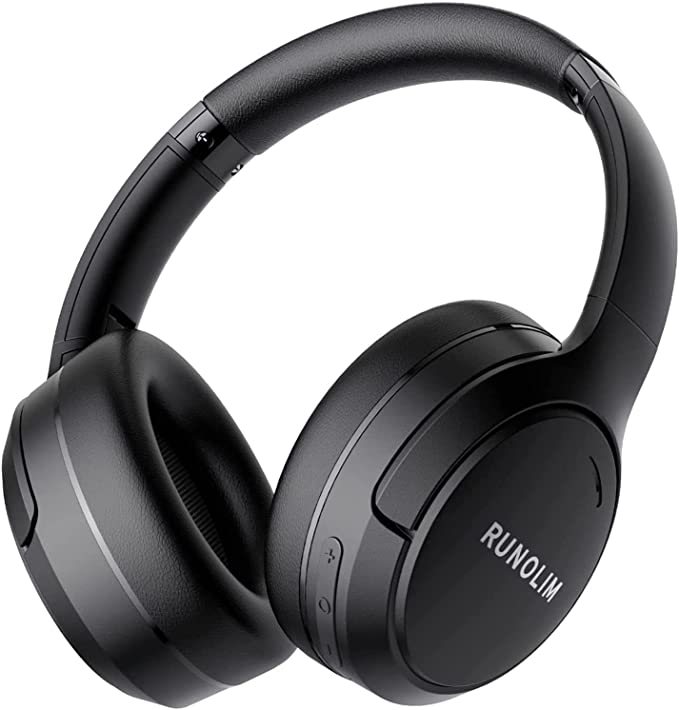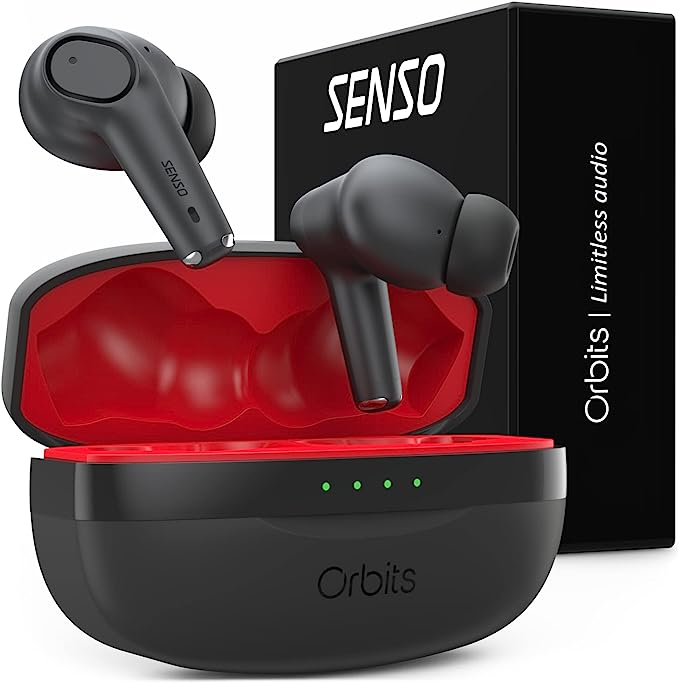Xmenha Clip-on Headphones: Hear Your World, Enjoy Your Music
Update on May 30, 2025, 2:04 p.m.
We often find ourselves enveloped in a personal audio bubble, a cocoon музыка woven by traditional headphones and earbuds. While this immersion offers a sanctuary for focus or escape, it can also disconnect us from the subtle, and sometimes crucial, symphony of the world around us. The rustle of leaves, the distant siren, a colleague’s approaching footsteps – these are the notes of reality that often get muted. But what if we could have both? What if technology could offer a way to enjoy our personal soundscapes while remaining fully attuned to our surroundings? This is the promise of the burgeoning field of open-ear audio, and the Xmenha Clip on Open Ear Wireless Headphones step onto this stage as an accessible exploration of this very concept. They invite us to consider a different way of listening, one that embraces both our chosen audio and the unscripted soundtrack of life.

The Science of Openness: Hearing Naturally in a Tech-Driven World
At the core of the open-ear philosophy lies a simple, yet profound, idea: to work with our natural hearing rather than against it. Our auditory system is a marvel, designed to perceive sound waves traveling through the air, a process known as air conduction. This is how we hear conversations, the environment, and unamplified music.
Air Conduction: The Whisper of Reality
The Xmenha clip-on headphones champion this natural mechanism. Unlike bone conduction headphones that bypass parts of the outer and middle ear by vibrating the skull, or in-ear devices that seal the ear canal, these headphones utilize small, precisely positioned speakers that rest near the ear’s opening. These speakers gently project sound into the ear canal, allowing it to be processed just as a natural, ambient sound would be. This approach often leads to a sound profile that many find more spacious and less “in your head” than other methods. It aims to preserve the spatial cues that help us locate sounds in our environment, contributing to a more organic listening experience. The key is that the ear canal itself remains unobstructed, a gateway for both your chosen audio and the world’s whispers.
The Twin Pillars: Situational Awareness & Unburdened Comfort
The decision to leave the ear canal open isn’t arbitrary; it’s rooted in two fundamental user benefits:
1. Situational Awareness: This is perhaps the most lauded advantage. Imagine jogging down a busy street; an open-ear design means you’re far more likely to hear an approaching car, a bicycle bell, or another runner. In an office, it means hearing a colleague address you even while you’re enjoying background music. This isn’t just about convenience; it’s a significant safety consideration in many environments. It allows us to engage more fully and safely with our surroundings.
2. Unburdened Comfort: Traditional earbuds, especially those that create a tight seal, can lead to a sensation of pressure, heat, and even soreness over extended periods. The Xmenha headphones, by clipping onto the outer ear (the auricle or pinna), aim to circumvent these issues. The absence of anything inserted into the ear canal can dramatically reduce listening fatigue, making them potentially suitable for hours of continuous use. The goal is an almost “forget-it’s-there” experience.

Xmenha In-Depth: A Symphony of Features for Everyday Harmony
The Xmenha Clip-on Open-Ear Wireless Headphones are more than just an open design; they integrate a suite of features aimed at delivering a balanced and user-friendly experience. Let’s delve into what makes them tick.
Feature Deep Dive: The Gentle Embrace – Design, Comfort, and Materials
The first thing one notices about these headphones is their “Non-in-Ear,” clip-on architecture. This design is central to their identity. Weighing a mere 2.87 ounces (approximately 81 grams), as listed in their product information, they aim for a featherlight presence. This low mass is critical in minimizing any sense of burden on the ear.
Why this design matters is immediately apparent to anyone who has experienced the discomfort of ill-fitting or prolonged earbud use – the pressure points, the ear canal soreness, or even concerns about hygiene from a sealed environment. The clip-on approach sidesteps these common complaints.
The science behind this comfort lies in principles of ergonomic load distribution. Instead of concentrating pressure within the sensitive ear canal, the clip gently distributes its minimal weight across a less sensitive part of the outer ear. The product description mentions the use of the “latest skin-friendly materials.” While specific compounds aren’t detailed, generally, materials chosen for prolonged skin contact in wearables are selected for biocompatibility (to reduce irritation or allergic reactions), flexibility to conform to different ear shapes, and a soft texture.
The tangible benefit is clear: the potential for all-day wearability without significant discomfort. This makes them an attractive option for individuals who need to wear headphones for extended work periods, those with sensitive ear canals, or simply anyone who prioritizes comfort. As some user sentiments from the provided product data suggest, the comfort and lightweight nature are often highlighted positively.
Imagine a day: clipping them on for the morning commute, keeping them on for background music while working, and still feeling comfortable enough to wear them for an evening walk. This is the scenario the design strives to enable.
Feature Deep Dive: The Unseen Handshake – Bluetooth 5.0 and Seamless Connection
Reliable wireless connectivity is the lifeblood of any modern portable audio device. The Xmenha headphones incorporate Bluetooth 5.0 technology.
Why this specific version of Bluetooth matters can be understood by looking at its evolution. Bluetooth 5.0, as defined by the Bluetooth Special Interest Group (SIG), offers several key enhancements over older iterations, such as Bluetooth 4.x. These generally include the potential for faster data transfer speeds (allowing for higher quality audio transmission or more robust connections), increased range (though this is heavily influenced by environmental factors and device antenna design), and improved power efficiency (Bluetooth Low Energy, or BLE, is a significant part of the 5.0 specification, contributing to longer battery life in compatible devices).
The science of its operation involves complex radio frequency protocols, but a simple analogy is a more robust and efficient “digital handshake” between the headphones and your source device (phone, tablet, computer). The Xmenha headphones also feature a “Hall switch,” which typically means a magnetic sensor in the charging case. When you open the case, the sensor detects this and can trigger the headphones to power on and automatically attempt to connect to the last paired device – this is the “One-Step Pairing” convenience highlighted.
The tangible benefit for the user is a more stable audio stream with fewer annoying dropouts, potentially better synchronization between audio and video (lower latency), and a generally more frustration-free pairing process. While the product source doesn’t detail specific low-latency codecs, the underlying Bluetooth 5.0 standard provides a better foundation for it. The ease of use is a significant factor in overall user satisfaction, although some users, according to the provided Q&A, needed to figure out how to switch the device’s language from its initial setting.
Picture this: you open the case, the headphones connect almost instantly to your phone, and your podcast resumes without a hitch. Or you move around your home office during a video call, maintaining a clear connection. These are the everyday conveniences that a solid Bluetooth implementation aims to provide.

Feature Deep Dive: The Balancing Act – Audio Quality in an Open World
Delivering compelling audio through an open-ear design presents unique acoustic challenges. The Xmenha headphones claim “Superior Audio Quality” facilitated by “the most advanced TWS chip” which reportedly provides “deep bass and crisp treble.”
Why this is a balancing act is due to the physics of sound. Open designs can struggle with bass reproduction because low-frequency sound waves are long and tend to dissipate easily if there isn’t a seal to direct them into the ear canal. Ambient noise can also more readily mix with the desired audio, potentially masking finer details.
The science and tech involved would ideally include a well-tuned driver (the tiny speaker component) and intelligent digital signal processing (DSP) handled by the TWS (True Wireless Stereo) chip. A TWS chip is a System-on-Chip (SoC) that typically manages Bluetooth connectivity, audio decoding, power management, and sometimes active noise cancellation or other audio enhancements. While the specific “TWS chip” model in the Xmenha headphones isn’t named in the provided information, its role is crucial. To achieve “deep bass” in an open design, manufacturers might employ larger drivers, psychoacoustic enhancements via DSP to make bass perceived as richer, or careful acoustic porting.
For calls, a “built-in high-definition microphone” is mentioned. Microphone performance in open designs can be tricky due to the mic’s exposure to ambient sounds and its distance from the mouth. Effective call clarity often relies on multiple microphones, beamforming technology (to focus on the speaker’s voice), and noise suppression algorithms – details not specified for this product in the source.
The tangible benefit is the ability to enjoy music with a reasonable level of fidelity while maintaining that crucial connection to the outside world. For calls, the aim is clear communication, at least in quieter environments. Based on the provided user feedback, music quality is generally perceived as good for the price point. However, the microphone’s performance during phone calls is a noted area of concern for some users, who reported that people on the other end sometimes had difficulty hearing them, especially if there was background noise.
Imagine listening to your favorite upbeat playlist while out for a walk, the music providing energy, yet still being able to hear a cyclist approach from behind. Then, you take a quick call from a friend; in a quiet park, it might be perfectly fine, but in a bustling street, the experience might be more challenging.

Feature Deep Dive: The Enduring Spark – Battery Life, Charging, and That Little Extra
For any wireless device, “battery anxiety” is a real concern. The Xmenha headphones address this with several specifications: 5-6 hours of continuous playback from the earbuds themselves, and an impressive additional playtime provided by the mini charging case, which the product description states can allow the headphones to “play for 200 hours.” This latter figure likely refers to the total listening time achievable through multiple recharges from a fully powered case, or perhaps an extended standby capability. A full charge for the earbuds takes approximately 1.5 hours.
Why this matters is obvious: no one wants their music acessórios to die mid-commute or mid-workout. The convenience of a long-lasting case reduces the frequency of needing to find a power outlet.
The science and tech here revolve around efficient Li-ion (Lithium-ion) battery technology in both the earbuds and the case, coupled with power-efficient components like the Bluetooth 5.0 chip. The charging case itself contains a larger battery that recharges the smaller batteries in the earbuds. An interesting “hidden little secret,” as the product page calls it, is that the charging case can also function as an emergency power bank to charge your mobile phone. This typically involves a USB output port on the case and a DC-DC converter to provide the appropriate voltage. A digital LED power display on the case is a practical touch, showing the remaining charge of both the earbuds and the case itself, preventing guesswork.
The tangible benefit is peace of mind. For many users, 5-6 hours from the earbuds is sufficient for a good portion of the day, and the case acts as a reliable backup for several more charges. The fast charge time means less waiting. The power bank feature, while likely for small top-ups in emergencies rather than full phone charges, is a thoughtful addition. User feedback often correlates battery life satisfaction with how well it meets daily usage patterns, and the specifications here suggest a positive experience for many.
Consider a full workday where you use the headphones for several hours of focused work with background music. During your lunch break, you pop them back in the case for a quick top-up. Later, on your way home, your phone battery is critically low, and the headphone case offers just enough juice to make an important call. This is the kind of utility these power features aim to provide.
Feature Deep Dive: The Resilient Companion – IPX5 Water Resistance
Life, especially an active one, involves sweat, and sometimes, unexpected rain. The Xmenha headphones come with an IPX5 waterproof rating.
Why this rating is important is for durability and versatility. It protects your investment from moisture damage that could otherwise shorten its lifespan or cause malfunctions, particularly if you plan to use them for sports or outdoor activities.
The science behind IP ratings comes from the International Electrotechnical Commission (IEC) standard 60529. The “IP” stands for Ingress Protection. The first digit (replaced by “X” here) relates to protection against solid particles (like dust); “X” means it hasn’t been specifically tested or rated for dust ingress. The second digit, “5” in IPX5, signifies protection against water. Specifically, an IPX5 rating means the enclosure can withstand low-pressure water jets projected by a nozzle (6.3 mm) from any direction for at least 3 minutes. It does not mean the device is fully waterproof or suitable for submersion (like swimming).
The tangible benefit is the freedom to use the headphones during strenuous workouts where you’re likely to sweat heavily, or if you get caught in a light rain shower, without undue worry. The provided product information explicitly mentions this makes them suitable for sports and exercise, and that they won’t be “afraid of splashing water in any direction.”
Imagine going for a hard run on a humid day, sweat dripping, or cycling home when a light drizzle starts. The IPX5 rating means your headphones are built to handle these common scenarios.

Feature Deep Dive: The Fingertip Conductor – Touch Controls and Customization
Modern earbuds are increasingly moving away from physical buttons towards touch-sensitive controls, and the Xmenha headphones follow this trend. They offer touch controls on either earbud for managing music playback (play/pause, skip tracks), adjusting volume, handling phone calls (answer/end), and activating your device’s voice assistant (like Siri or Google Assistant).
Why this matters is for on-the-go convenience. Fumbling for your phone to perform these simple actions can be distracting or impractical, especially when active.
The science and tech usually involve capacitive touch sensors. These sensors detect the change in capacitance caused by the touch of a finger (which is conductive). Different tap patterns (single tap, double tap, long press) are then interpreted by the headphone’s firmware to trigger specific commands. The Xmenha product data also highlights a Q&A point about language switching: “With Bluetooth disconnected (white and green lights flashing alternately), double-tap the multifunction key.” This indicates a level of customization, though it requires a specific procedure.
The tangible benefit is direct, immediate control over your audio and calls without needing to interact with your primary device. This enhances the user experience by making interactions smoother and more intuitive. However, the provided user feedback suggests a learning curve for some, with reports that the touch controls can be “very sensitive” or “super sensitive,” potentially leading to accidental activations until one gets used to the required touch pressure and location. The language switch feature, while useful, also seems to have been a point of initial confusion for some users who found their headphones defaulted to a language they didn’t understand.
Picture yourself on a crowded train, needing to quickly pause your music to hear an announcement – a simple tap does the job. Or, while your hands are full carrying groceries, you answer an incoming call with a touch to your ear. These are the moments where well-implemented touch controls shine, though mastering their sensitivity might take a little practice with these particular headphones.
Living with Xmenha: Scenarios, Experiences, and the Wisdom of Crowds
The true measure of any wearable technology lies in how seamlessly it integrates into the fabric of daily life. The Xmenha Clip-on Open-Ear headphones, with their emphasis on awareness and comfort, lend themselves to a variety of scenarios:
-
The Soundtrack to Your Aware Life:
- The Commuter: Navigating busy streets or public transport, you can stay entertained or informed by a podcast while remaining alert to traffic sounds, platform changes, or fellow commuters.
- The Office Navigator: In an open-plan office, these allow for personal background music to aid focus, yet ensure you don’t miss a colleague calling your name or an impromptu team discussion.
- The Fitness Enthusiast: Whether running outdoors, cycling, or working out at the gym, you can have your motivational soundtrack without being dangerously oblivious to your surroundings or unable to hear an instructor.
- The Home Multitasker: Listening to an audiobook while doing chores, you can still hear the doorbell, the kids playing in the next room, or the oven timer.
-
Voices from the Community (A Thematic Echo of User Feedback from the Source):
The collective experience, as gleaned from the provided product information’s review snippets, paints a picture of a product with clear strengths and some acknowledged quirks. Many users lauded the joy of hearing both their chosen audio and the world around them, often citing this as a primary reason for their satisfaction, particularly for safety during outdoor activities. The comfort factor also resonated positively, with individuals appreciating the lightweight, non-intrusive design for extended wear. The sound quality for music was often deemed good for the price, meeting expectations for casual listening.However, the call quality conundrum was a recurring theme. While the headphones feature a microphone, some users found that individuals on the other end of a call had difficulty hearing them clearly, an issue often exacerbated by background noise – a common challenge for microphones not positioned close to the mouth or lacking advanced noise-canceling tech. The sensitivity of the touch controls was another point of discussion, with some finding them a bit too eager to respond, requiring a period of adaptation. The initial language setting also presented a hurdle for a few, though a solution was available.
Beyond the Horizon: The Future of Open-Ear Listening
The Xmenha Clip-on headphones represent a snapshot of current accessible open-ear technology. But this field is dynamic. We might anticipate future iterations of open-ear devices (from various brands) incorporating even smarter ambient sound filtering – perhaps AI-driven systems that can intelligently dampen distracting noises while amplifying important sounds like speech or warning signals. Audio processing will undoubtedly continue to improve, further refining sound quality and potentially offering more sophisticated psychoacoustic bass enhancement or personalized sound profiles. The integration of more advanced sensors for health tracking or contextual awareness could also find its way into such designs.
What remains constant is the human desire for both personal enrichment through audio and a fundamental connection to our environment and each other. Technology that thoughtfully serves this dual need, rather than forcing a choice between them, will likely continue to resonate.
Concluding Thoughts: Finding Your Auditory Sweet Spot
The Xmenha Clip on Open Ear Wireless Headphones offer a compelling proposition for those seeking an audio solution that prioritizes situational awareness and long-wearing comfort without entirely sacrificing sound enjoyment. They represent a practical entry point into the world of open-ear listening, balancing a range of useful features like Bluetooth 5.0 connectivity, decent battery life, and IPX5 water resistance with an accessible design.
They may not be the perfect solution for every individual or every scenario – particularly if pristine call quality in noisy environments or absolute audio immersion are top priorities. However, for the active individual, the office multitasker, the safety-conscious commuter, or anyone who simply dislikes the sensation of sealed earbuds, they present a very interesting alternative. Ultimately, the best audio device is the one that best fits your unique lifestyle and listening preferences. The Xmenha headphones encourage us to explore what “freedom in listening” truly means, inviting us to find that sweet spot where our personal soundtrack harmonizes with the vibrant, unscripted symphony of the world around us.
